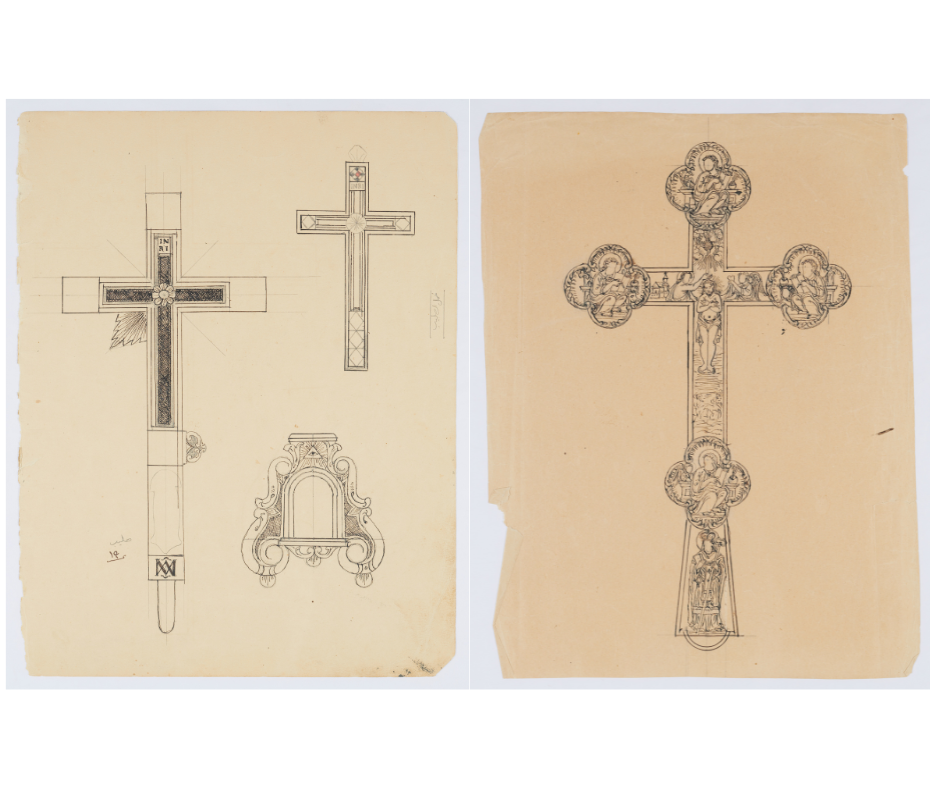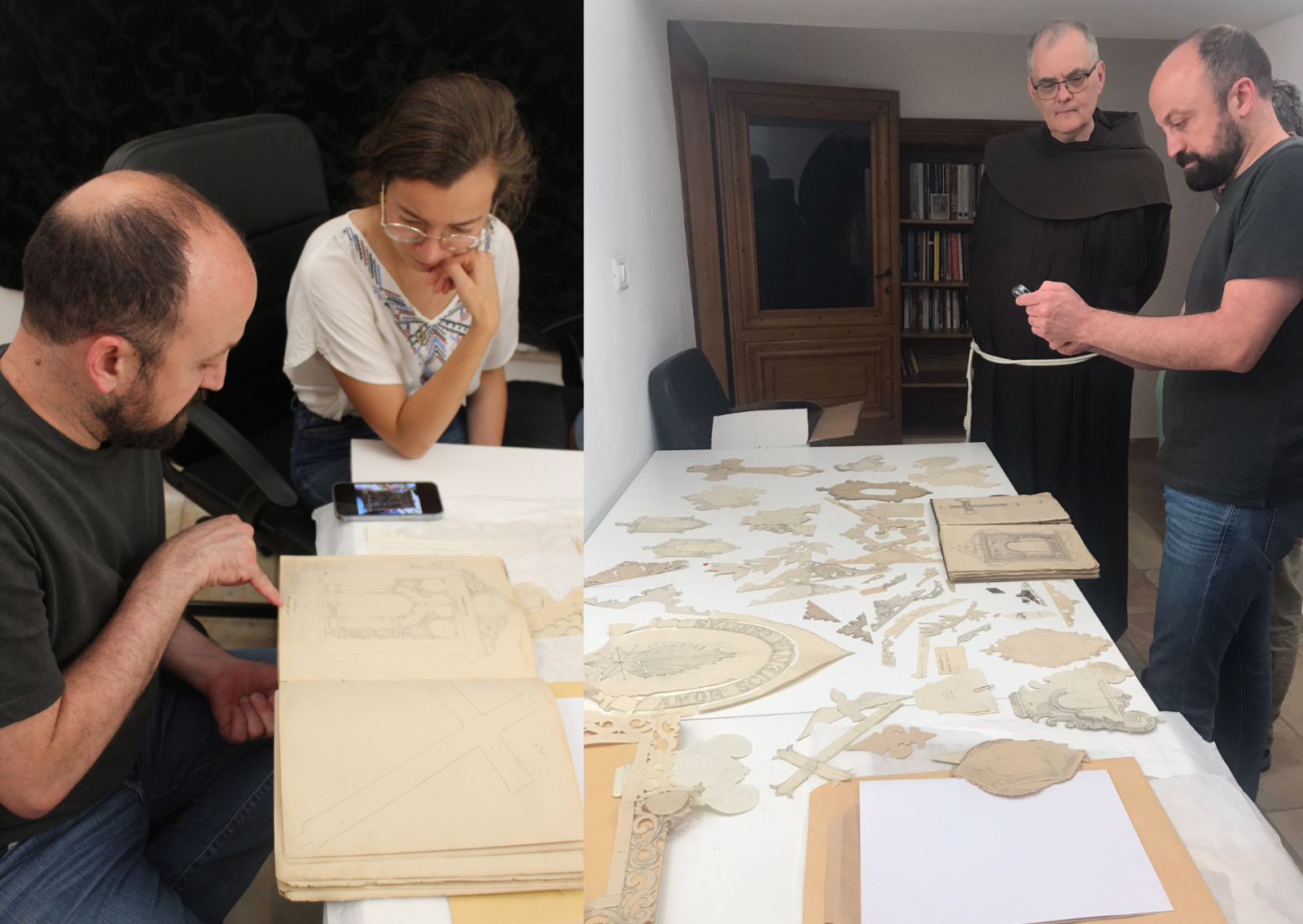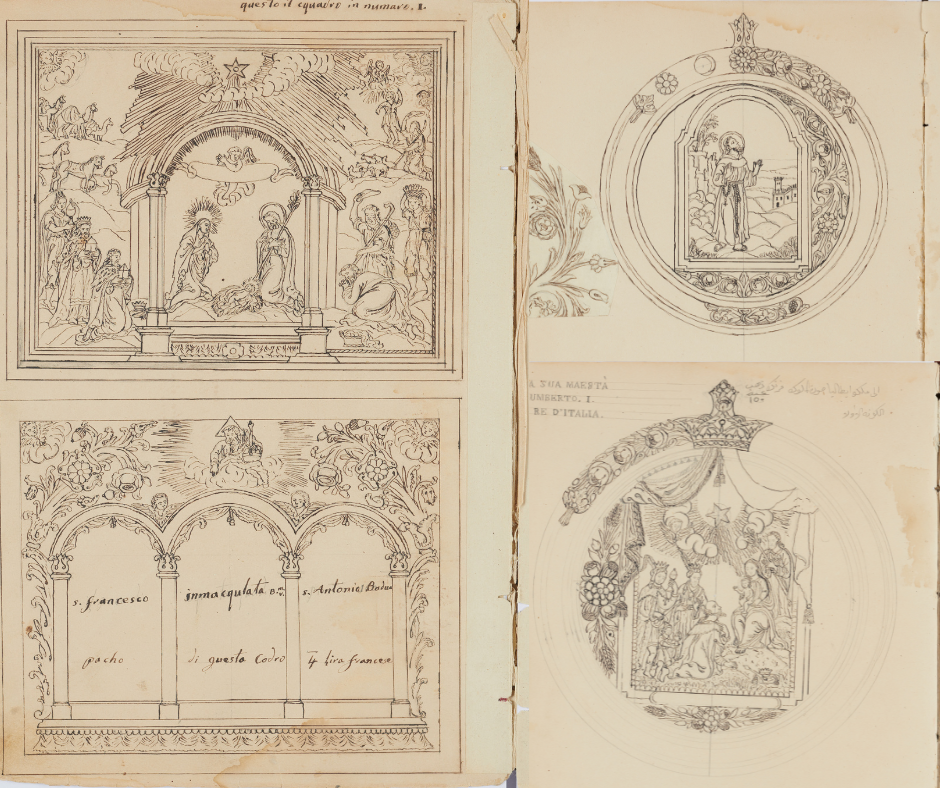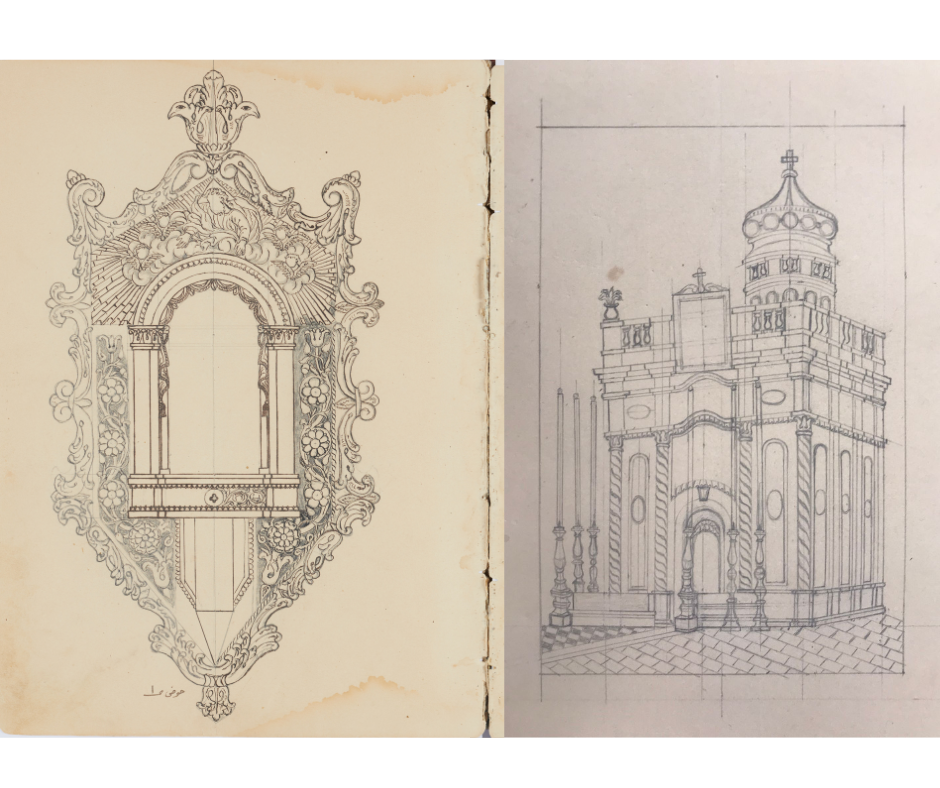An important discovery for the Palestinian art of mother-of-pearl
Preparing exhibitions is always an occasion for discoveries or rediscoveries. Only a few hours before the inauguration of “Memories of Saint-Saviour : convent, parish, museum”, while the whole team of the museum was rushing around, the expert George Al’Ama stopped, speechless, in front of a large showcase with a red background.

“Where did you find that?” the specialist in Palestinian art and member of the scientific committee asked, pointing to the ink drawings carefully laid out behind the glass. “In the Archives of the Custody, and there are at least two more folders full of others,” was the immediate answer. Since then, there has been no rest for the collector, a meeting was agreed for the following week: he had to open those folders.
A few days later, dozens of drawings cut out of paper or cardboard were revealed. The ones that could be called “patterns” were used as the bases by the Bethlehem craftsmen when they carved their works out of mother-of-pearl. One by one, the preparatory drawings were laid out on a large table, arousing the expert’s amazement. With great patience, George Al’Ama and a volunteer set to work, recomposing the sets and sorting them out.

“ All this comes from the workshop of Suleiman Roc, one of the most important craftsmen for the work of mother-of-pearl” George analysed immediately, recognising a “hallmark” even though there is no name or signature on the drawings. “On the other hand, it is impossible to say which member of the workshop created one composition or another.”
Two notebooks were also found: one with ink drawings, showing a style that was very likely Suleiman Roc’s own. George recognizes several works in it. The other, illustrated using pencils and coloured crayons, is very certainly from the time of his sons, Hana and Antoine. Besides, the name Hana appears once or twice in the pages of the notebook. Working mother-of-pearl was effectively handed down from father to son.

Altar cards, shells, crosses, reliquaries and small holy water fonts, the drawings in various styles were cut out of old postcards or even death announcements. If the differences of period can be perceived, the precise dating of these drawings is going to require a lot of work which is already arousing the enthusiasm of the Cultural Heritage team.
This rediscovery was made possible thanks to the long-term endeavour of Fr. Sergey Loktionov and Fr. Narcyz Klimas, archivists of the Custody of the Holy Land but also of Tiziana Nandesi, who has just completed the fourth volume of the catalogue of the Archives of the Custody. This has allowed recording these numerous documents and bringing to the light these folders given by fr. Jad Sara to the Archives in 2013, when the friars’shop moved. This collection is yet to be explored and should give us information on the relations between the mother-of-pearl craftsmen and the Franciscans of the Holy Land. It will also enrich the current catalogue on the collections of mother-of-pearl, very certainly throwing light on how the workshops in the 19th and 20th centuries worked.

(Translated from French by Joan Rundo)



